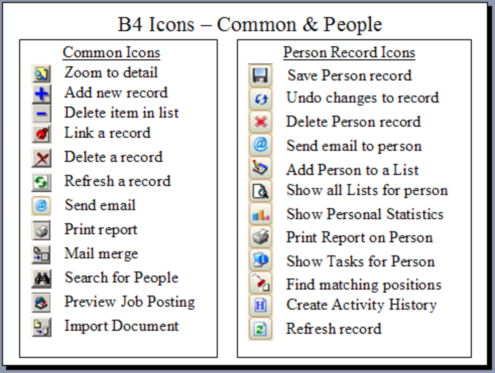Objectives
•Application software Overview
•Screen Layout - Find, Browse, Detail
•Use of Screen-based Action Icons
•Screen Navigation
•Introduction to Integrated Productivity Tools
The Deskflow Menu Bar enables a User to access the following:
•Productivity Tools that view or perform the following: Open Diary, Open Appointments Month-at-a-Glance, Show My History, View My Messages, View My Activity History, Send /Receive Email, Schedule New Appointment, Schedule New Task, Schedule New Phone Call, Schedule New Meeting.
•Deskflow Main Menu Menu and icons for searching, viewing and managing: People, Companies, Marketing activity, Documents, Projects, My Projects, Job Orders, My Orders, Business Pipeline, Bookmarks, Help (with Language preference)
•User Preferences such as: E-Mail options, Change my password, Change my time-zone, Define Location format from Address data, Appointment warning on, Task and Phone call warning on, Show diary on startup, Auto-create activity history for overdue Appointments, Remember form position and size on close.
Example: Deskflow Menu Bar

Useful Hints
•Primary Deskflow views have three main tabs: Find, Browse and Details (see examples below).
•Multiple primary views can be opened independently, allowing Users to multitask. There is a limit imposed by the amount of memory provided by Windows. With 2 Gigabytes of 32-bit memory, about 18 primary views can be opened concurrently.
•Details tabs have sub-tabs for information categorization.
•Lists show at the top half of a view, and row details show at the bottom half of a view.
•Lists usually have a set of Action Icons close by.
•Icons act on one or more selected rows in the list.
•To select multiple rows in a list, hold down the Ctrl key and click the selected rows.
•Candidate lists have column sorting and a CTRL+F find feature (useful for long lists).
•All primary views are non-modal, meaning that a User can switch away from a primary view to another view, even before saving changes to the first view.
•Primary views that are being created/edited are also non-modal.
Example: People Find

Example: People Browse

Example: People Details

